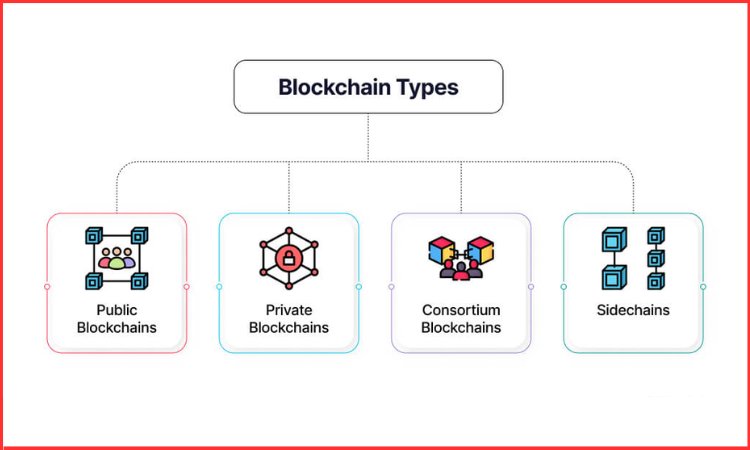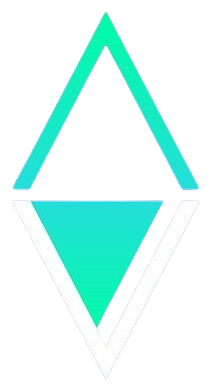Blockchain is one of the most talked-about technologies of our age. It is changing industries and the way we store, share, and secure data. For most people, Blockchain still feels complicated. That is why this article is designed as a complete beginner’s guide to Blockchain Technology in 2025.
It is important to remember that Blockchain is much broader than just cryptocurrencies. It is a versatile technology that provides security, trust, and transparency across various fields. The implications of Blockchain technology are far-reaching, changing how businesses operate and how governments function across sectors such as finance, healthcare, and supply chains. By the end of this guide, you’ll understand what Blockchain is, its importance, and how it will be utilized in 2025.
What Is Blockchain Technology?
Blockchain is a digital system for securely recording transactions. It is referred to as a “chain of blocks” because information is stored in blocks, each linked to the one before it, creating an unbreakable chain difficult to hack.
Think of Blockchain like an open notebook available to everyone. Once you write something down, you cannot erase or change it. This open and decentralized source of truth is a powerful tool for fostering trust and transparency.
Why Blockchain Matters in 2025
By 2025, Blockchain is transcending the boundaries of Bitcoin and Ethereum, becoming a staple of the everyday business and technology landscape. Reports suggest that the global Blockchain market is projected to exceed $94 billion by 2027, with growth rates exceeding 66% annually.
This remarkable growth indicates that Blockchain is making inroads into various sectors, with its value being increasingly recognized in areas such as banking, logistics, identity management, healthcare, and government services.
Essential Features of Blockchain
Blockchain exhibits several distinctive features that contribute to its effectiveness, as outlined in this beginner’s guide for 2025. Key features include:
- Decentralization: It is not controlled by a single authority. Control is distributed across many computers (nodes) that collectively own the system.
- Transparency: All changes and transactions recorded on the Blockchain are visible to anyone at all times.
- Immutability: Once data is added to the Blockchain, it cannot be altered or erased.
- Security: Cryptography safeguards the data from potential hackers, protecting sensitive information.
- Smart Contracts: These contracts execute automatically when predefined conditions are met, functioning similarly to traditional contracts.
How Does Blockchain Work?
To illustrate, let’s create a relatable scenario.
Imagine five friends documenting their expenses in a shared diary. When one friend records an expense, the other four must validate it before it is officially accepted. Once recorded, it’s challenging (if not impossible) to erase, just like transactions on Blockchain technology.
Each transaction needs to be verified by numerous participants (computers), known as nodes. Once validated, the transaction is added to a block, which is then linked to the Blockchain, creating a permanent and unchangeable record.
Different Types of Blockchain Networks
Blockchain is not a one-size-fits-all solution. There are four primary types of Blockchain that every beginner should understand in 2025:

- Hybrid Blockchain: A blend of public and private features.
- Public Blockchain: Open to everyone, allowing full participation and visibility. Examples include Bitcoin and Ethereum.
- Private Blockchain: Controlled by a single organization, often utilized for internal systems.
- Consortium Blockchain: Managed by a group of organizations, commonly seen in banking networks.
A Step-by-Step Guide for Beginners
Here’s a straightforward step-by-step approach to start your Blockchain journey:
1. Understand the Basics: Familiarize yourself with terms like ledger, block, node, and consensus.
2. Learn Cryptography: Get to know hashes, public/private keys, and signatures.
3. Try Wallets and Testnets: Set up a wallet (like MetaMask) and play with testnet coins.
4. Explore Smart Contracts: Understand their functionality and why bugs can be problematic.
5. Choose a Platform and Language: Start with Solidity (Ethereum) or Rust (Solana/Polkadot).
6. Follow Hands-On Tutorials: Build simple applications like token transfers or voting systems.
7. Get Familiar with Developer Tools: Explore Remix, Hardhat, Truffle, Ganache, and web3 libraries (ethers/web3.js).
8. Deploy on a Testnet First: Always test thoroughly before going live on the mainnet.
9. Learn Security Practices: Research common vulnerabilities (like reentrancy or overflow) and review audit reports.
10. Engage with the Community: Participate in forums, GitHub, Discord, and local meetups while contributing to projects.
11. Build a Portfolio: Share code, demos, and write-ups that showcase your skills.
Blockchain vs Traditional Databases
Many beginners confuse Blockchain with traditional databases. Here are some key differences:
1. Traditional databases are governed by a single authority, while Blockchain has no single owner.
2. Data in traditional databases can be altered, but once added to the Blockchain, it becomes immutable.
3. While databases can outperform Blockchain in speed for certain tasks, the latter offers a reliable, peer-reviewed ledger that enhances trust and security.
Real-World Uses of Blockchain in 2025
Blockchain is significantly impacting various industries worldwide. Here are some critical applications observed in 2025:
1. Finance and Banking
Blockchain is streamlining payments, enhancing safety by reducing fraudulent activities, and eliminating intermediaries. As of 2025, banks are leveraging Blockchain for cross-border payments, digital identities, and fraud detection.
2. Supply Chain
Corporations like Walmart and IBM are implementing Blockchain to track goods from production to consumer. This technology allows buyers and sellers to track products against a digital identity, mitigating counterfeit risks.
3. Healthcare
In healthcare, Blockchain protects patient records, ensuring that only authorized personnel can access sensitive information. This builds trust while minimizing data breach risks through its immutable nature.
4. Government Services
Some nations are using Blockchain for processes such as voting, land registration, and certificate issuance, fostering trust and reducing corruption.
5. Digital Identity
Blockchain enables individuals to control their personal identity documents online, promoting security and reducing identity theft.
Benefits of Blockchain Technology
A comprehensive guide to Blockchain would be incomplete without highlighting its advantages:
- Security: Enhanced data security against hacking.
- Transparency: Open access for verification, minimizing hidden agendas.
- Trust: Trustworthy transactions without intermediaries.
- Efficiency: Quicker and cheaper transactions.
- Innovation: Facilitating new models like DeFi (Decentralized Finance) and NFTs.
Cons of Blockchain Technology
Despite its advantages, Blockchain technology also presents some challenges in 2025:
- Scalability: Many networks still struggle to process transactions rapidly.
- Energy Consumption: Certain Blockchain platforms require substantial energy and resources.
- Regulation: Governments are working on implementing viable regulations.
- Complexity: The intricacies of Blockchain can be daunting for beginners.
Blockchain & Cryptocurrencies
Many newcomers often conflate Blockchain with cryptocurrencies. However, they are distinct concepts. Blockchain is the underlying technology, while cryptocurrencies are applications that operate within it. Bitcoin, Ethereum, and other digital currencies rely on Blockchain, but this technology can also be applied in sectors like supply chains and healthcare without involving crypto.
Trends in Blockchain in 2025
In 2025, awareness of Blockchain trends is essential for staying up to date. Significant trends include:
- Green Blockchain: Emphasis on eco-friendly networks that consume less energy.
- Blockchain in AI: Utilizing Blockchain to secure data utilized by artificial intelligence systems.
- Metaverse and Blockchain: Enabling digital worlds built upon Blockchain technology.
- CBDCs (Central Bank Digital Currency): Nations, including India, are piloting digital currency initiatives on Blockchain.
Why Beginners Should Learn Blockchain in 2025
As organizations seek Blockchain skills, there’s a growing demand for experts. Banks, corporations, and governments are constantly on the lookout for Blockchain professionals. Beginners can kick off their learning journey with foundational concepts before diving into areas such as coding, smart contracts, or Blockchain project management.
The World Economic Forum anticipates that by 2030, over 10% of the global GDP will be stored on Blockchain. Understanding this technology will be crucial for future careers and businesses.
FAQs
1. Is Blockchain legal in India in 2025?
Yes, Blockchain is legal, but cryptocurrencies have specific regulations.
2. Can Blockchain be hacked?
While highly secure, Blockchain applications or wallets with poor coding can be vulnerable.
3. Do I need coding to learn Blockchain?
Not necessarily. Beginners can start with conceptual knowledge before delving into coding.
4. Who is using Blockchain in India?
Banks, IT firms like Infosys, and numerous startups in supply chain and healthcare sectors are employing Blockchain technologies.
5. What skills are best for Blockchain careers?
Strong knowledge of smart contract development, cryptography, cloud computing, and project management are valuable.



